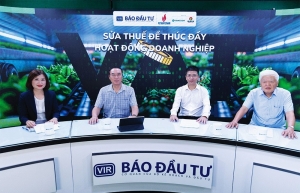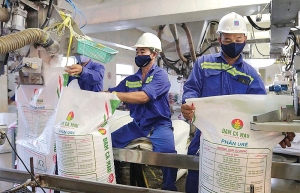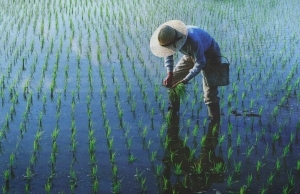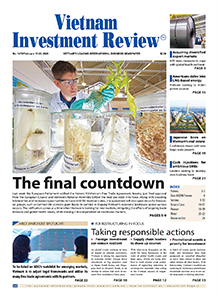Tax move to aid fertiliser producers
According to global market research firm Mordor Intelligence, Vietnam’s fertiliser market is projected to reach $3.4 billion in 2024 and $4.2 billion by 2030, with a compound annual growth rate of 3.38 per cent.
 |
| Photo: baodautu.vn |
The outlook for Vietnam’s fertiliser industry is buoyed by increasing domestic and international demand, while supply is tightening as China limits fertiliser exports, impacting global supply. Fertiliser prices are therefore expected to remain stable, which will help boost the profitability of companies in this sector.
Along with market prospects, the fertiliser industry is expected to benefit from the new VAT tax policy. From July, the VAT policy for fertiliser manufacturers will change from tax-exemption to a 5 per cent tax rate.
Currently, imported fertilisers are priced 3-5 per cent lower than domestic products. In the case of intense competition with imported fertilisers, local fertiliser manufacturers, who can reclaim VAT on input production costs, may choose to lower their selling prices, narrowing the price gap with imports and from there encouraging farmers to use locally produced fertilisers.
In 2025, PetroVietnam Ca Mau Fertiliser JSC plans to generate $559.3 million in revenue, and $30.9 million in post-tax profit, up 3.9 per cent in revenue but a 42 per cent decrease in profit.
Analysts assume that Ca Mau Fertiliser’s profit plan for this year is cautious, and the company may exceed this target, especially with the VAT tax rebate starting from July.
For example, ACB Securities predicts that Ca Mau Fertiliser may rake in $560 million in revenue and $59.2 million in post-tax profit, marking a 4 per cent increase in revenue and an 11 per cent jump in profit on-year.
SSI Research provides a more positive assessment, forecasting that Ca Mau Fertiliser’s 2025 profit could rise by 29 per cent compared to 2024.
As for PetroVietnam Fertiliser and Chemical JSC (DPM), the company is expected to witness growth from rising urea prices and the new VAT tax scheme.
Since the outset of 2025, urea prices on the international market have seen double-digit growth, meanwhile urea is the company’s key product.
ACBS estimates that DPM would be able to deduct $6.8 million in input VAT in 2025, increasing to $14 million in 2026.
Although the actual benefits from the new VAT tax move depends on the price support scheme between the company and farmers, SSI Research expects DPM’s profit growth in 2025 to reach 50 per cent.
Meanwhile, DAP-Vinachem is expected to maintain its growth fundaments thanks to improved fertiliser demand during the Winter-Spring season and China’s export restrictions, which will last until the end of Q1/2025. Additionally, DAP-Vinachem will benefit from the positive changes in the VAT tax policy.
BIDV Securities (BSC) predicts that DAP-Vinachem’s revenue and post-tax profit could reach $136.6 million and $8.56 million in 2025, respectively, marking a 3 per cent increase in revenue and a 49 per cent increase in profit compared to 2024.
Meanwhile, Duc Giang Chemicals Group (DGC) is expected to eye an 18 per cent jump in revenue this year, leveraging an anticipated 4 per cent increase in the phosphorus price and increasing consumption in all product categories.
Additionally, its profit margins could improve due to a higher proportion of self-extracted raw materials. These factors are instrumental to a 32 per cent increase in the company’s net profit this year.
An Binh Securities (ABS) assumes that Duc Giang Chemicals’ profit margins may improve as the company plans to expand extraction and production at its mining site in Lao Cai province by 11 hectares, which is expected to begin production in 2025.
This will help increase the supply of raw materials, primarily apatite ore, from 80 per cent to 90 per cent, or even 100 per cent.
On the stock market, promising profits are a growth driver for shares in general, and those of fertiliser producers in particular. In 2024, fertiliser stocks outperformed the VNIndex, rising by 27 per cent, more than double the increase in the overall index.
| Regarding the fresh VAT move, fertiliser importers are expected to incur minor impacts from the change since the VAT rate on both input and output is kept at 5 per cent, leading to no fluctuation in profits. Meanwhile, producers of straight fertilisers (urea, phosphate, and DAP) like DCM and DPM will benefit from the ability to reclaim VAT on raw material costs. Conversely, mixture (NPK) fertiliser manufacturers will not benefit from this policy, as their main raw materials are straight fertilisers. Therefore, whether the VAT exemption or tax is applied, it does not affect raw material costs. |
 | Businesses anticipate green light for fertiliser VAT switch Domestic fertiliser producers will have opportunities to capture market share if the proposal to apply a new VAT rate on fertiliser is approved. |
 | Conclusion nears for VAT fertiliser issue Lawmakers have assessed that if fertilisers were included in the VAT tax group at a rate of 5 per cent, it could create a fairer market but would certainly increase product prices. |
 | Impacts on VAT fertiliser rate rise considered for farmers The National Assembly Standing Committee has fixed a 5 per cent VAT rate on the draft amendments to the existing VAT law, which, if becoming true, will affect millions of farmers in Vietnam while likely benefiting fertiliser producers. |
What the stars mean:
★ Poor ★ ★ Promising ★★★ Good ★★★★ Very good ★★★★★ Exceptional
Related Contents
Latest News
More News
- Tien Phong strives for a greener plastics industry (December 02, 2025 | 09:22)
- Czech enterprises strengthen presence (December 01, 2025 | 18:00)
- New phase launched to support women-led ventures (December 01, 2025 | 15:08)
- Airlines race to patch Airbus A320/A321 fleets (December 01, 2025 | 09:17)
- European expertise to boost Vietnam’s sustainable logistics push (November 29, 2025 | 10:00)
- AkzoNobel: from painting walls to painting the future (November 28, 2025 | 13:31)
- Tien Phong Plastic ready for a new growth cycle (November 28, 2025 | 10:56)
- AEON Vietnam charts ambitious growth path (November 28, 2025 | 10:53)
- Carlsberg Vietnam accelerates drive towards net-zero emissions (November 27, 2025 | 19:06)
- Green manufacturing insights and transformations: SABECO’s path to industry leadership (November 27, 2025 | 14:35)

 Tag:
Tag:



























 Mobile Version
Mobile Version